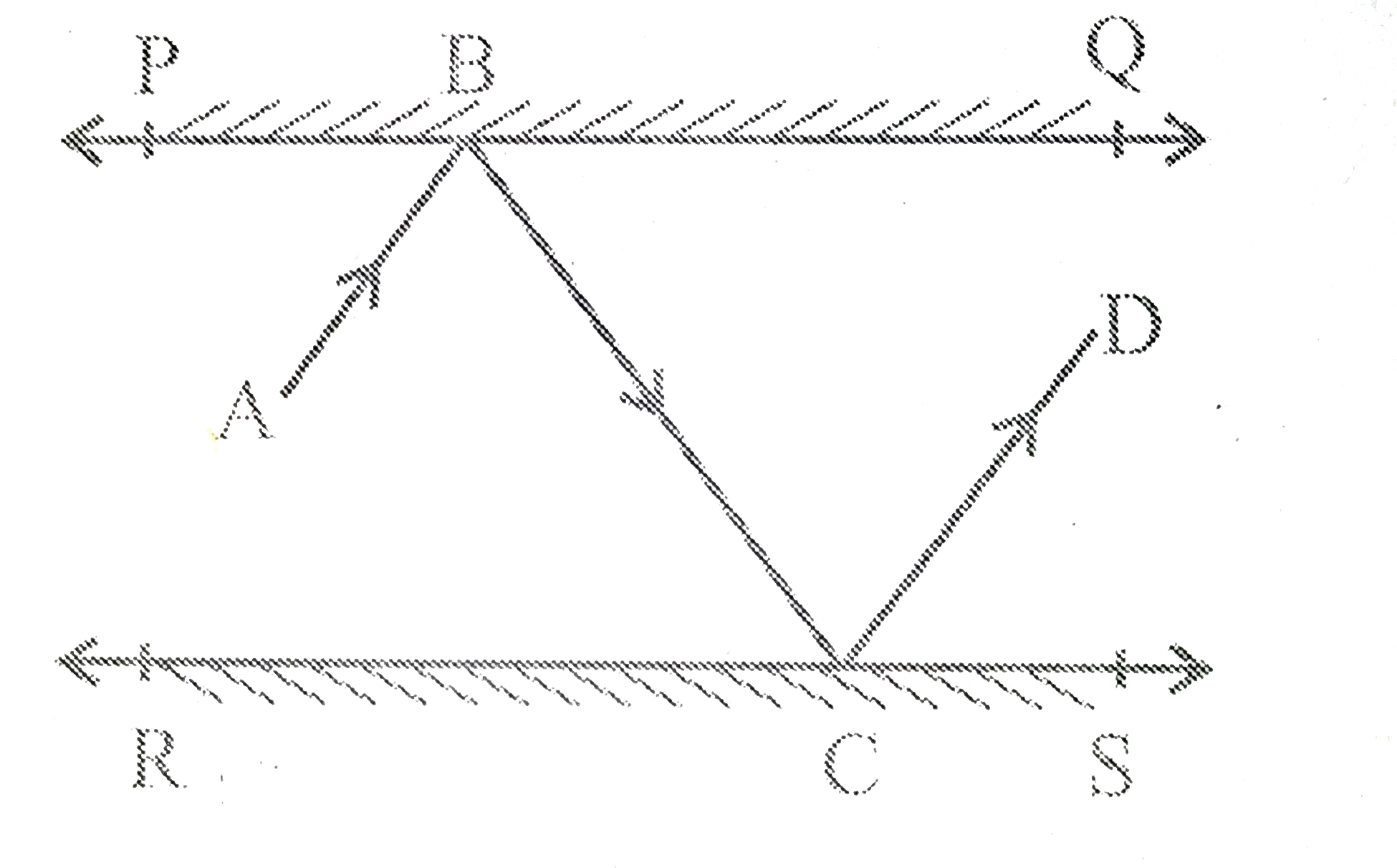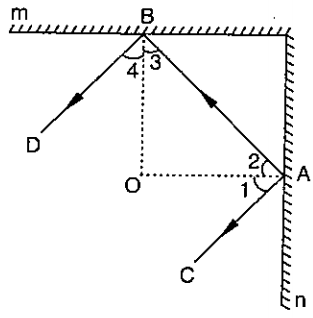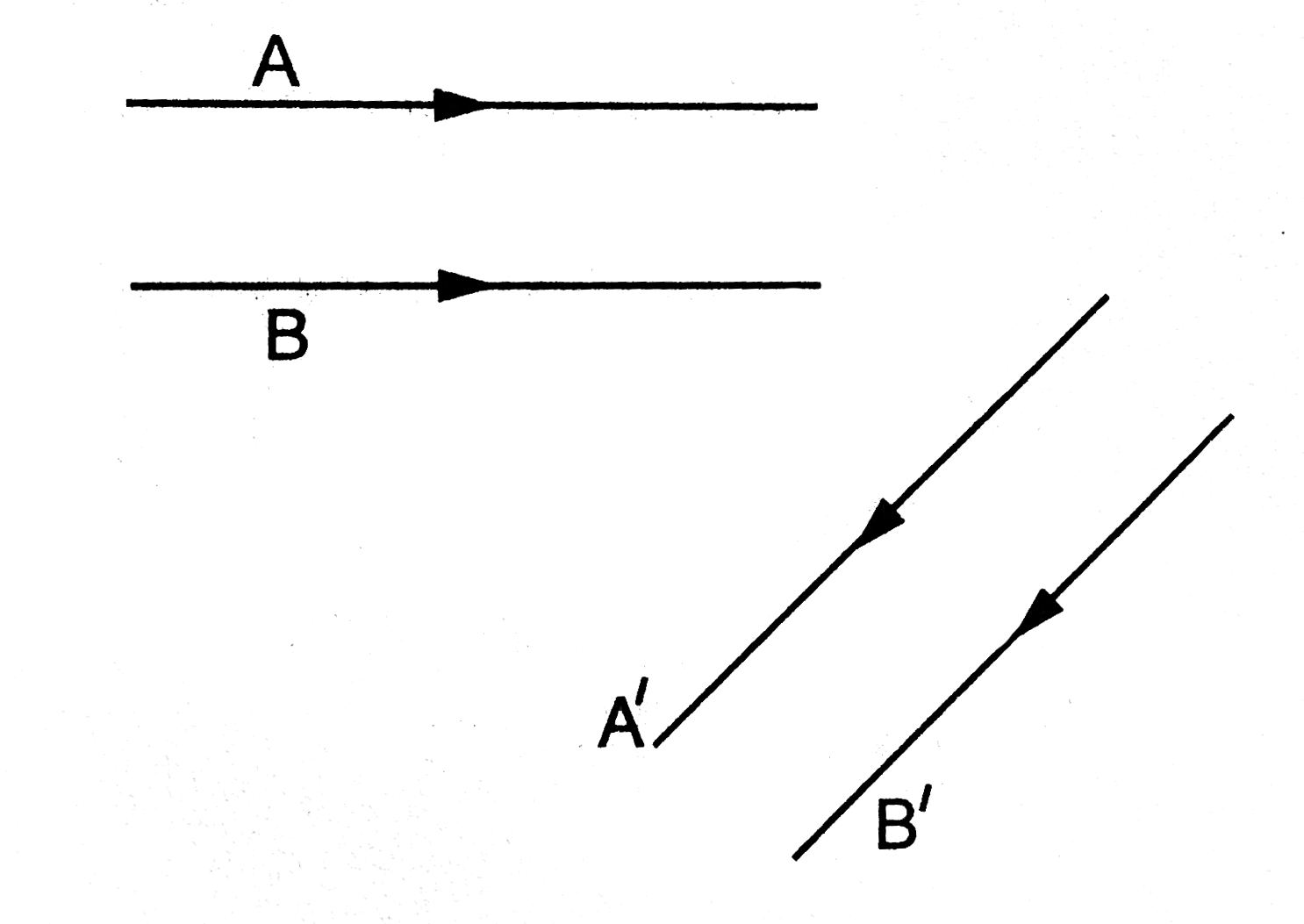In Figure, PQ and RS are two mirrors placed parallel to each other. An incident ray AB strikes the mirror PQ at B, the reflected ray moves along the path BC and strikes the mirror RS and C and again reflects back along CD. Prove that AB∣∣CD.
Step by step video & image solution for In Figure, P Q\ a n d\ R S are two mirrors placed parallel to each other. An incident ray A B strikes the mirror P Q at B , the reflected ray moves along the path B C and strikes the mirror R S and C and again reflects back along C D. Prove that A B||C D. by Maths experts to help you in doubts & scoring excellent marks in Class 9 exams.
Updated on:21/07/2023Topper's Solved these Questions
Similar Questions
In Fig. 6.33, PQ and RS are two mirrors placed parallel to each other. An incident ray AB strikes the mirror PQ at B, the reflected ray moves along the path BC and strikes the mirror RS at C and again reflects back along CD. Prove that AB || CD.

View SolutionIn Figure, m and n are two plane mirrors perpendicular to each other. Show that the incident ray CA is parallel to the reflected ray BD

View SolutionIn Figure ABCD and AEFD are two parallelograms. Prove that: PE=FQ
View SolutionFigure shows two rays A and B beig reflected by a mirror and going as A' and B'. The mirror

View SolutionIn Figure, AB and CD are two chords of a circle, intersecting each other at P such that AP=CP. Show that AB=CD.
View SolutionIn Figure, if AB∣∣DC and P is the mid-point BD, prove that P is also the midpoint of AC
View SolutionTwo plane mirrors are inclined to each other at an angle 60∘ if a ray of light incident on first mirror parallel to the second mirror, it is reflected from the second mirror
View SolutionIn Figure, P and Q are centres of two circles intersecting at B and C.ACD is a straight line. Then, ∠BQD=
View SolutionTwo plane mirrors are making an angle of 60∘ to each other. A light ray falls on one of the mirrors. The light ray is incident parallel to angular bisector of mirrors. How many reflection does the light ray undergo?
View SolutionIf a,b, and c are the unit vectors along the incident ray, reflected ray and the outward normal to the reflector. Then
View Solution
